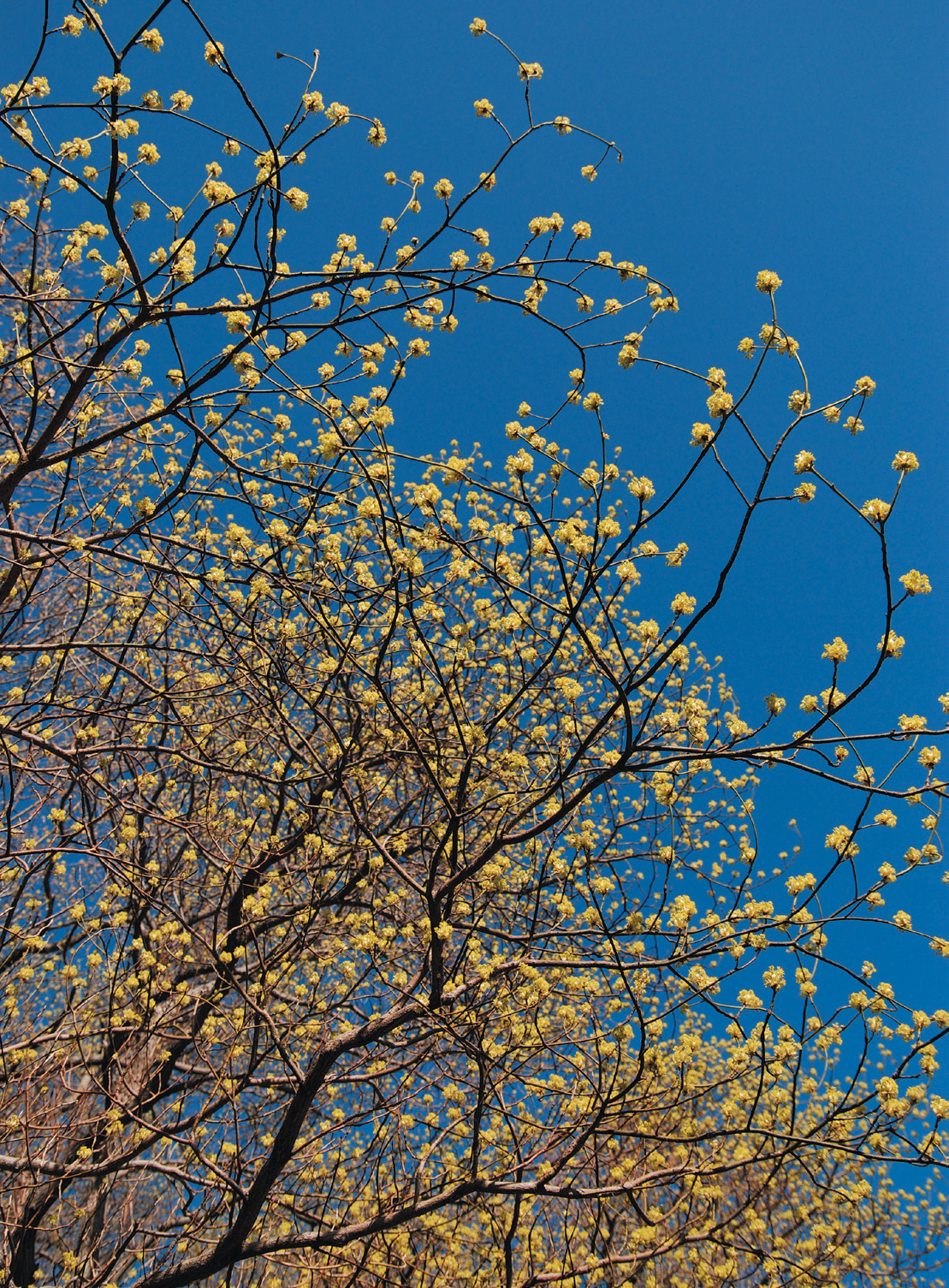Sassafras (Sassafras albidum) is an admirable tree any time of the year. Native to most of the eastern United States as well as far southern Ontario, sassafras is a medium-sized (typically 30 to 60 feet [9 to 18 meters] tall) deciduous tree with an attractive tiered branching habit. It may form dense, shrubby thickets as suckers arise from its shallow, wide-spreading, lateral root system, especially in sites like old farm fields where it has room to spread.

Sassafras is primarily dioecious, bearing staminate (male) and pistillate (female) flowers on separate plants. Blooming in early to mid spring, the fragrant yellow flowers are borne in clusters that, en masse, put on quite a show despite the relatively small size (about 1/3 inch [8 millimeters] in diameter) of individual flowers. Sassafras fruits are rather striking: ovoid, deep blue drupes cupped in fleshy, cherry red pedicels that often persist after the fruit has dropped or been eaten.
Sassafras albidum has unusual foliage—its leaves may display three distinct morphologies, all of which may be present on the same tree. The three leaf shapes are 1) an unlobed oval, 2) a two-lobed “mitten,” with one large lobe and a smaller “thumb” lobe, and 3) a three-lobed, trident-like form. Sassafras foliage is a pleasant-enough light green in summer, but its autumn coloration in shades of yellow, orange, and red is truly spectacular. The foliage also has a culinary aspect; filé powder, a flavoring and thickening agent used in Creole gumbo, is made of young sassafras leaves, dried and finely ground. Sassafras is also a food plant for caterpillars of spicebush swallowtail and tiger swallowtail butterflies.
Young sassafras twigs are olive green and, when scratched, emit a lemony, slightly medicinal odor. Mature bark on trunks is orangish brown and deeply furrowed. The yellowish wood is light and somewhat brittle, however, it is fairly rot resistant and so has been used to make barrels, fence posts, and other items. Oil of sassafras is extracted primarily from the bark of sassafras roots and has been used for medicines, fragrances, and flavorings, including for root beer.
Sassafras is a member of the laurel family (Lauraceae), a group of mostly tropical trees and shrubs. There are just three species in the genus Sassafras. In addition to the North American S. albidum there are two similar looking species in Asia, S. tzumu from China and S. randaiense, endemic to Taiwan. Another familiar temperate region genus in the family is Lindera, the spicebushes. Scratch the stem of the native North American spicebush (Lindera benzoin) and you’ll smell a lemony-medicinal fragrance similar to sassafras.
Citation: Rose, N. 2017. Through the seasons with sassafras. Arnoldia, 74(4): 32–33.
For all its ornamental attributes you’d think sassafras would be more widely planted. Perhaps the main reason it’s not on every street corner is that it’s a bit difficult to propagate and transplant. Stem cuttings do not root readily, so propagation is done from seeds, which require stratification, or from root cuttings. Fortunately, container-grown sassafras can be found at some nurseries, especially those specializing in native plants. Sassafras grows best in moist, well-drained sandy loam but also tolerates other soils as long as they’re well drained. It is generally cold hardy through USDA Plant Hardiness Zone 5 (average annual minimum temperature -10 to -20°F [-23.3 to -28.9°C]).
There are currently ten specimens of Sassafras albidum growing in the Arboretum. The most prominent of these is a group (22915-A, B, C, and E) growing right along Bussey Hill Road across from the lilac collection. This is a great-looking grove of sassafras, but unfortunately their exact provenance is unknown (they were accessioned in 1950 as “existing plants”). We do have several accessions of known provenance, including one (968-A) collected from a woods near the Arboretum in 1884, but we also hope to add more wild-collected accessions of this beautiful native tree as part of our ongoing Campaign for the Living Collections.
Nancy Rose is the editor of Arnoldia.